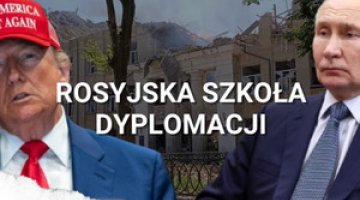A futile gesture: Russia denounces the CFE Treaty
On 16 May, the State Duma, acting under an expedited procedure, voted unanimously to terminate the Treaty on Conventional Armed Forces in Europe (CFE), as requested by President Vladimir Putin on 10 May. In doing so Andrey Kartapolov, the chairman of the Parliamentary Committee on Defence, accused NATO countries of exceeding the limits set in the treaty, while deputy foreign minister Sergei Ryabkov said participation in the treaty was contrary to Russian security interests. Justifying the decision, he pointed to Finland’s accession to NATO which, as he put it, creates “the real prospect of American troops appearing on Finnish territory, that is, on our border”.
According to Ryabkov, it will take about six months to complete all the termination procedures. However, the Duma’s decision is a mere formality, since Russia effectively ceased to be a participant in the CFE Treaty in July 2007, when it unilaterally suspended its implementation.
The genesis and evolution of the treaty
The Treaty on Conventional Armed Forces in Europe, in its original version, was signed on 19 November 1990, by the then member states of the North Atlantic Treaty Organisation and the Warsaw Pact. It imposed quantitative limits on five categories of offensive armaments – tanks, infantry fighting vehicles, artillery units of 100-mm calibre and above (cannons, howitzers, mortars and multi-barrelled rocket launchers), combat aircraft and combat helicopters – which the two alliances could have deployed in Europe from the Atlantic to the Urals. It also created a mechanism for mutual control in the form of mandatory notifications and inspections. Limits were designed to ensure a balance of force between the alliances, and to prevent any forms of deployment that would have enabled one side to launch a sudden attack on the other.
The adoption of the CFE Treaty was one of the main manifestations of the end of the Cold War. It was intended to lay the foundation for a new post-Cold War security architecture in Europe. However, by the time it formally came into force (9 November 1992), the Soviet Union had broken up into 15 states and the Warsaw Pact had been dissolved, making it necessary to adapt the treaty’s provisions to the new reality. This was done under the Tashkent Agreement in May 1992, in which the arms limit allocated to the Soviet Union was divided among those of the former union republics that were at least partly in Europe (excluding the Baltic states, which had not been invited, and the states of the South Caucasus), and under the so-called Final Act, signed by the treaty’s old and new participants in Helsinki (CFE-1A) in July 1992.
In the second half of the 1990s, the signatory states negotiated an adaptation of the treaty which, while further reducing the overall numbers of permitted armaments, replaced the limits on the alliances (in simple terms) with limits on the individual states, setting the ceilings on the amount of military equipment allowed on their territories In the context of the West’s relations with Russia, the redefinition of the limits imposed by the original CFE Treaty was intended as a legal treaty guarantee to Russia that the admission of new members to NATO would not create a threat to it in the form of the deployment of Alliance forces on their territory.
A modified version of the treaty was finally signed at the OSCE summit in Istanbul in autumn 1999. It is worth mentioning that the limits assumed therein still exceeded the real quantities of armaments possessed by the signatories, after the reductions which they had carried out successively since the end of the Cold War. For example, for Poland, the new version of the CFE treaty provided for 1730 tanks and 2150 infantry fighting vehicles (of which 1362 and 1924 respectively would be in established units, while the rest were in depots), and for Germany 3444 tanks and 3281 infantry fighting vehicles. At the same time, the West made ratification of the Istanbul agreement conditional on the dismantling of Russian military bases in Georgia and Moldova, where they were located against the will of those countries’ governments. It also declared that it would abide by the treaty’s provisions, despite the lack of ratification. In the end, however, the NATO countries did not ratify it, as the Russian side consistently refused under various pretexts to withdraw its troops from Moldovan territory (Transnistria) or to dismantle the military base in Abkhazia (Gudauta), which is formally part of Georgia.
Russia ‘suspends’ the treaty’s implementation
In July 2007, Russia announced it was ‘suspending’ its implementation of the CFE Treaty and stopped providing the information required by it, citing the NATO countries’ failure to ratify the modified version of the treaty (Russia, Kazakhstan, Belarus and Ukraine did ratify it between 2000 and 2004); in 2015 it ceased its participation in the Joint Consultative Group overseeing the Treaty’s implementation. In exchange for a possible return to implementation of the treaty, Russia demanded – in addition to its ratification by Western states – that the Baltic states also be included. For their part, NATO states announced in 2011 that, in view of Russia’s failure to fulfil the treaty’s provisions, they too would not abide by them with regard to Russia.
What does the termination of the treaty mean?
As a consequence of the ‘suspension’ of the treaty’s implementation back in 2007, Russia’s denunciation of it is of no practical significance from a military point of view. The Kremlin’s decision is purely a political-propaganda demonstration. It is intended to signal that it rejects the possibility of a return to ‘cooperative security’ relations with the West based on post-Cold War principles, and that it is determined to bring about a revision of the post-Cold War European security architecture.
The gesture is also intended to show that as Russia’s war with Ukraine goes on, the prospects for finding a constructive modus vivendi between the West and Moscow are worsening. In this way, it provides an argument to Western proponents of ‘compromise’ at the expense of Ukraine’s territorial integrity and future international status. It is worth adding that Russia’s denunciation in June 2021 of the Open Skies Treaty – one of the main so-called confidence-building measures within the OSCE, and at the same time a mechanism for verifying the CFE Treaty – was made for similar reasons. The treaty ceased to apply to Russia in December 2021, two months before its full-scale aggression against Ukraine.
Russia’s ‘suspension’ on 21 February this year of its participation in the 2010 Strategic Offensive Arms Reduction Treaty (the so-called New START), which Moscow and Washington had extended for a further five years in February 2021, should be seen in a similar light. Russia’s ostentatious withdrawal from a series of arms control agreements can also be read as testament to the lack of any real and effective instruments to pressure the West, and as desperate attempts to mask this state of affairs with empty, formal gestures.





